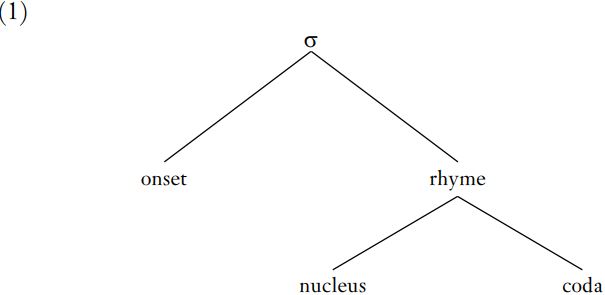

Grammar


Tenses


Present

Present Simple

Present Continuous

Present Perfect

Present Perfect Continuous


Past

Past Simple

Past Continuous

Past Perfect

Past Perfect Continuous


Future

Future Simple

Future Continuous

Future Perfect

Future Perfect Continuous


Parts Of Speech


Nouns

Countable and uncountable nouns

Verbal nouns

Singular and Plural nouns

Proper nouns

Nouns gender

Nouns definition

Concrete nouns

Abstract nouns

Common nouns

Collective nouns

Definition Of Nouns

Animate and Inanimate nouns

Nouns


Verbs

Stative and dynamic verbs

Finite and nonfinite verbs

To be verbs

Transitive and intransitive verbs

Auxiliary verbs

Modal verbs

Regular and irregular verbs

Action verbs

Verbs


Adverbs

Relative adverbs

Interrogative adverbs

Adverbs of time

Adverbs of place

Adverbs of reason

Adverbs of quantity

Adverbs of manner

Adverbs of frequency

Adverbs of affirmation

Adverbs


Adjectives

Quantitative adjective

Proper adjective

Possessive adjective

Numeral adjective

Interrogative adjective

Distributive adjective

Descriptive adjective

Demonstrative adjective


Pronouns

Subject pronoun

Relative pronoun

Reflexive pronoun

Reciprocal pronoun

Possessive pronoun

Personal pronoun

Interrogative pronoun

Indefinite pronoun

Emphatic pronoun

Distributive pronoun

Demonstrative pronoun

Pronouns


Pre Position


Preposition by function

Time preposition

Reason preposition

Possession preposition

Place preposition

Phrases preposition

Origin preposition

Measure preposition

Direction preposition

Contrast preposition

Agent preposition


Preposition by construction

Simple preposition

Phrase preposition

Double preposition

Compound preposition

prepositions


Conjunctions

Subordinating conjunction

Correlative conjunction

Coordinating conjunction

Conjunctive adverbs

conjunctions


Interjections

Express calling interjection

Phrases

Sentences


Grammar Rules

Passive and Active

Preference

Requests and offers

wishes

Be used to

Some and any

Could have done

Describing people

Giving advices

Possession

Comparative and superlative

Giving Reason

Making Suggestions

Apologizing

Forming questions

Since and for

Directions

Obligation

Adverbials

invitation

Articles

Imaginary condition

Zero conditional

First conditional

Second conditional

Third conditional

Reported speech

Demonstratives

Determiners


Linguistics

Phonetics

Phonology

Linguistics fields

Syntax

Morphology

Semantics

pragmatics

History

Writing

Grammar

Phonetics and Phonology

Semiotics


Reading Comprehension

Elementary

Intermediate

Advanced


Teaching Methods

Teaching Strategies

Assessment
Constituents of the syllable
المؤلف:
April Mc Mahon
المصدر:
An introduction of English phonology
الجزء والصفحة:
105-9
21-3-2022
1611
Constituents of the syllable
The universal syllable template accepted by most phonologists is given in (1). Note that small sigma (σ) is shorthand for ‘syllable’; capital sigma (Σ), as we shall see later, is used to symbolize the foot.

The only compulsory part of the syllable, and hence its head, or most important, defining unit, is the nucleus. This will generally contain a vowel (and recall that vowels are [+syllabic]): indeed, the syllable I, or the first syllable of about, consist only of a nucleus. If no vowel is available, certain consonants can become nuclear, and play the part of a vowel. In English, this is true of /l/, /m/, /n/, and /r/ in rhotic accents: that is, the sonorant consonants, in natural class terms. Each of the words bottle, bottom, button, butter has two syllables, and in each case, the second syllable consists only of nuclear, or syllabic  .
.
Both the onset and the coda are optional constituents, and each, if filled, will contain one or more consonants. In English, be has an onset but no coda; eat has a coda but no onset; and beat has both. Recognizing the difference between the nucleus, which is primarily the domain of vowels, and the onset and coda, where we find consonants, also casts some light on the relationship between the high vowels /i u/ and the glides /j w/. Phonetically, it is very hard to detect any systematic difference between [i] and [j], or [u] and [w] respectively; however, we can now say that [i] and [u] are [+syllabic], while the glides are [–syllabic], so that in ye, [j] is in the onset and [i:] in the nucleus, and similarly in woo, [w] is an onset consonant and [u:] a nuclear vowel. Clearly, [j] and [i:] are extremely similar phonetically; furthermore, since distinguishing syllable peaks, or nuclei, from margins allows us to predict where each will occur, they are in complementary distribution (and the same is true of [w] and [u:]). This makes [j] and [i:], and [w] and [u:], allophones of a single phoneme, with their distribution determined by position in the syllable.
 الاكثر قراءة في Phonology
الاكثر قراءة في Phonology
 اخر الاخبار
اخر الاخبار
اخبار العتبة العباسية المقدسة

الآخبار الصحية















 قسم الشؤون الفكرية يصدر كتاباً يوثق تاريخ السدانة في العتبة العباسية المقدسة
قسم الشؤون الفكرية يصدر كتاباً يوثق تاريخ السدانة في العتبة العباسية المقدسة "المهمة".. إصدار قصصي يوثّق القصص الفائزة في مسابقة فتوى الدفاع المقدسة للقصة القصيرة
"المهمة".. إصدار قصصي يوثّق القصص الفائزة في مسابقة فتوى الدفاع المقدسة للقصة القصيرة (نوافذ).. إصدار أدبي يوثق القصص الفائزة في مسابقة الإمام العسكري (عليه السلام)
(نوافذ).. إصدار أدبي يوثق القصص الفائزة في مسابقة الإمام العسكري (عليه السلام)


















